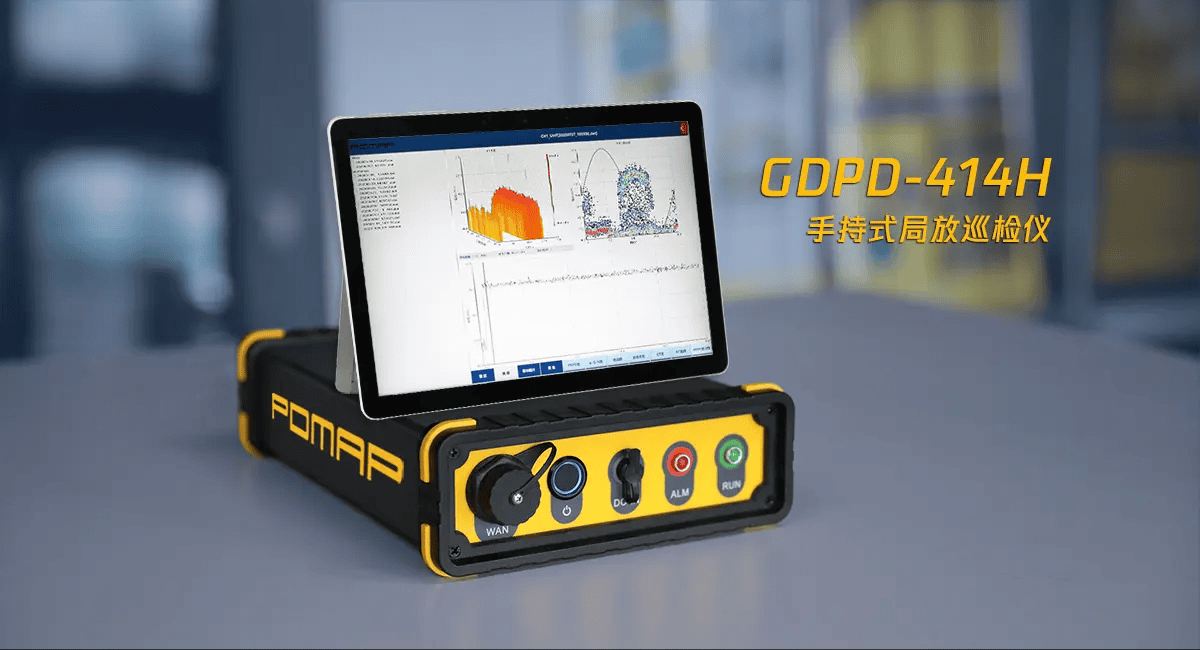The TEV partial discharge detection principle is a non-contact method for detecting partial discharge activity in high-voltage equipment. By receiving and analyzing high-frequency electromagnetic signals generated on the surface of the equipment, the presence and location of any partial discharge can be accurately determined. The TEV (Transient Earth Voltage) signal is generated by the transient voltage changes caused by the discharge activity.
The TEV partial discharge detection principle is based on two key concepts: the interaction between electromagnetic waves and electrical discharges and the receiving and analyzing capabilities of sensors. When a partial discharge occurs in the equipment, the electromagnetic waves are scattered by the discharge source and propagate on the surface of the equipment. The interaction between the excitation electromagnetic waves and the scattered waves formed on the surface of the equipment produces a TEV signal radiated from the surface of the equipment.
To capture and analyze the TEV signal, special TEV sensors are usually used, which are able to receive and convert high-frequency electromagnetic signals into measurable voltage signals. These sensors are usually placed in fixed positions on or near the surface of the equipment to continuously monitor the discharge activity.
By analyzing and processing the received TEV signal, the presence and location of the discharge activity can be determined. For example, by measuring the amplitude and spectral characteristics of the signal, the strength and frequency of the discharge source can be determined, and the health of the equipment can be further evaluated.
The TEV partial discharge detection principle is highly sensitive and accurate, and can be used to detect and monitor potential faults and defects in equipment at an early stage. This non-contact detection method can help improve the reliability and safety of equipment, reduce maintenance and downtime, and is essential for the power industry and the maintenance of high-voltage equipment.
The TEV partial discharge detection principle is a non-contact method for detecting partial discharge activity in high-voltage equipment. By receiving and analyzing high-frequency electromagnetic signals generated on the surface of the equipment, the presence and location of any partial discharge can be accurately determined. The TEV (Transient Earth Voltage) signal is generated by the transient voltage changes caused by the discharge activity.
The TEV partial discharge detection principle is based on two key concepts: the interaction between electromagnetic waves and electrical discharges and the receiving and analyzing capabilities of sensors. When a partial discharge occurs in the equipment, the electromagnetic waves are scattered by the discharge source and propagate on the surface of the equipment. The interaction between the excitation electromagnetic waves and the scattered waves formed on the surface of the equipment produces a TEV signal radiated from the surface of the equipment.
To capture and analyze the TEV signal, special TEV sensors are usually used, which are able to receive and convert high-frequency electromagnetic signals into measurable voltage signals. These sensors are usually placed in fixed positions on or near the surface of the equipment to continuously monitor the discharge activity.
By analyzing and processing the received TEV signal, the presence and location of the discharge activity can be determined. For example, by measuring the amplitude and spectral characteristics of the signal, the strength and frequency of the discharge source can be determined, and the health of the equipment can be further evaluated.
The TEV partial discharge detection principle is highly sensitive and accurate, and can be used to detect and monitor potential faults and defects in equipment at an early stage. This non-contact detection method can help improve the reliability and safety of equipment, reduce maintenance and downtime, and is essential for the power industry and the maintenance of high-voltage equipment.

Post time: Oct-18-2024
